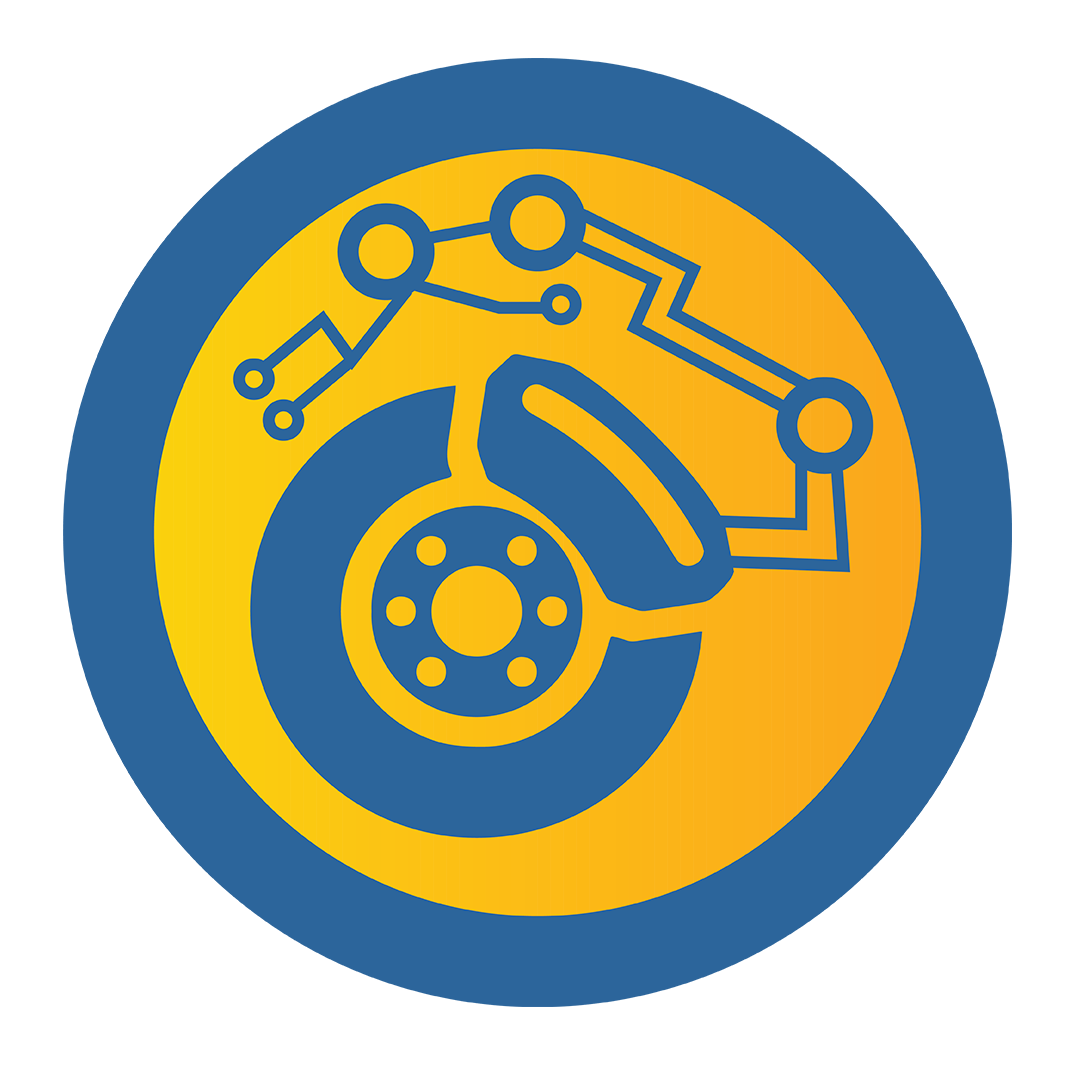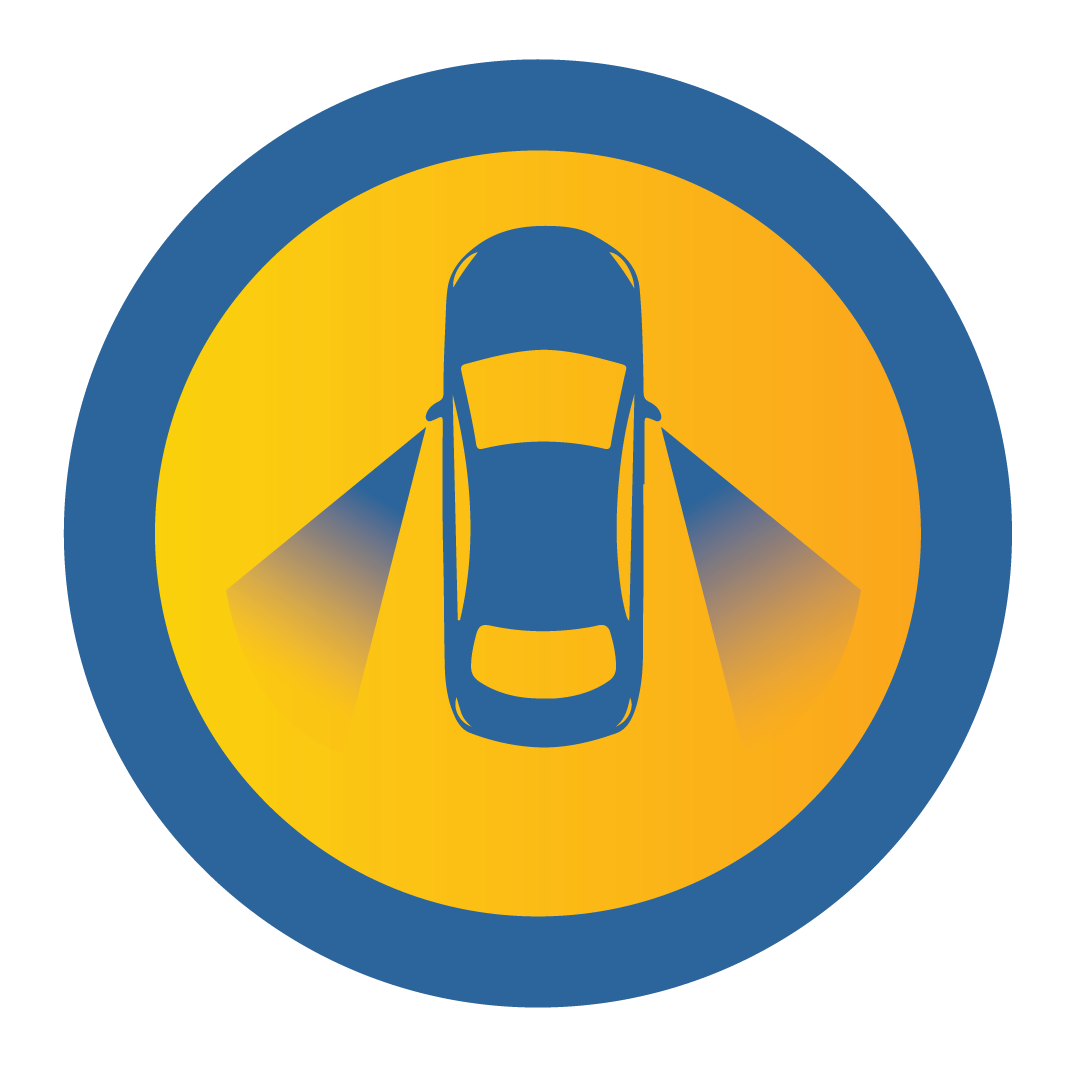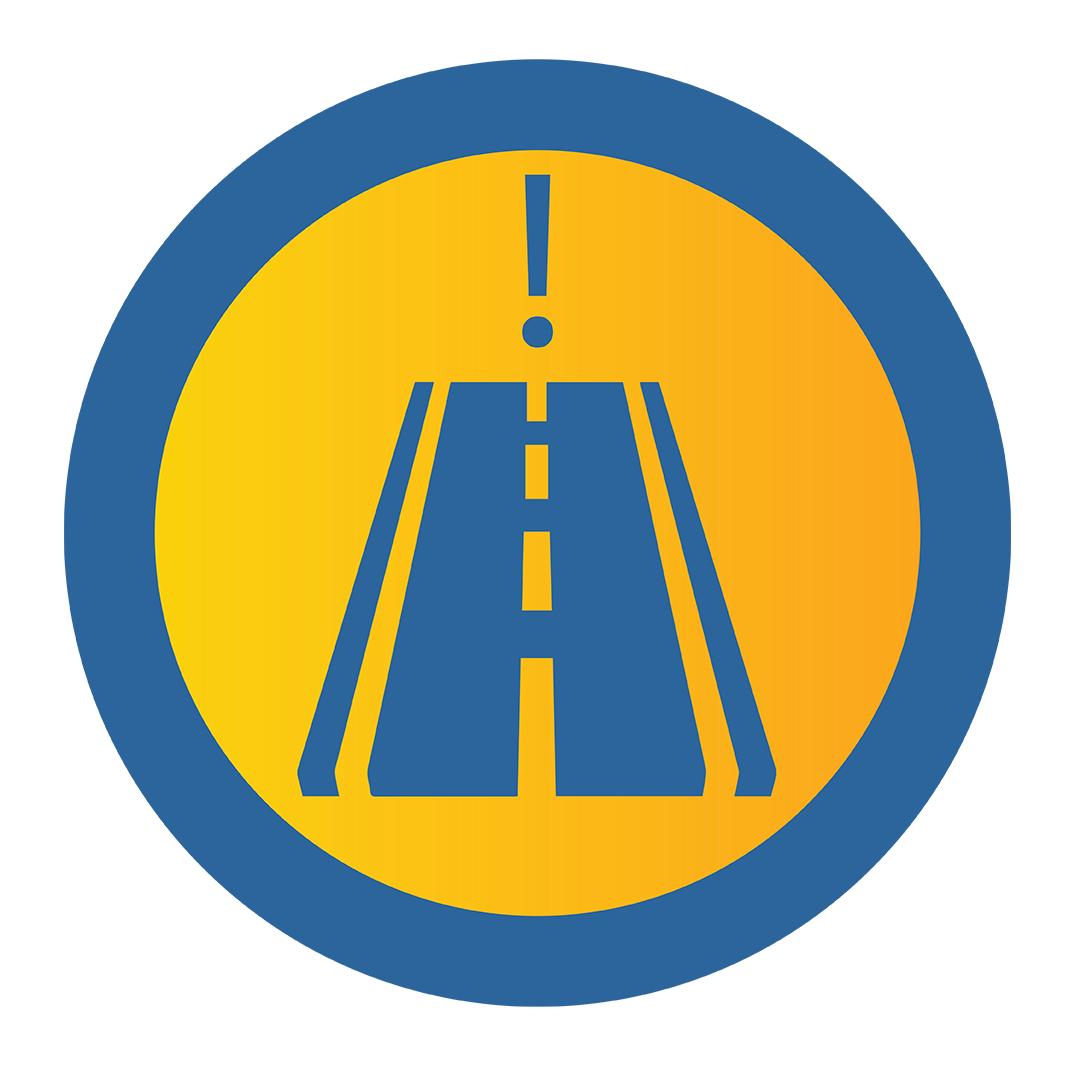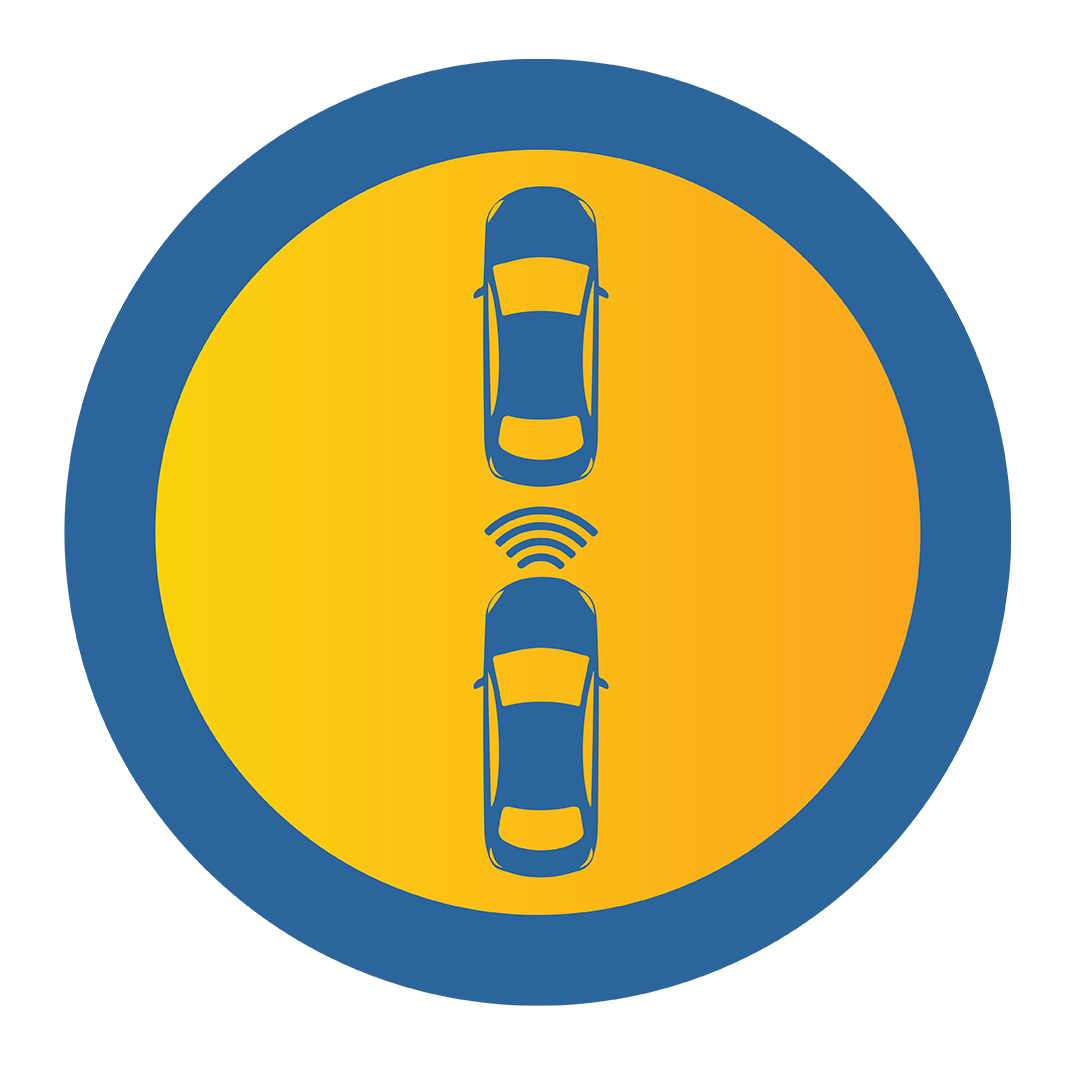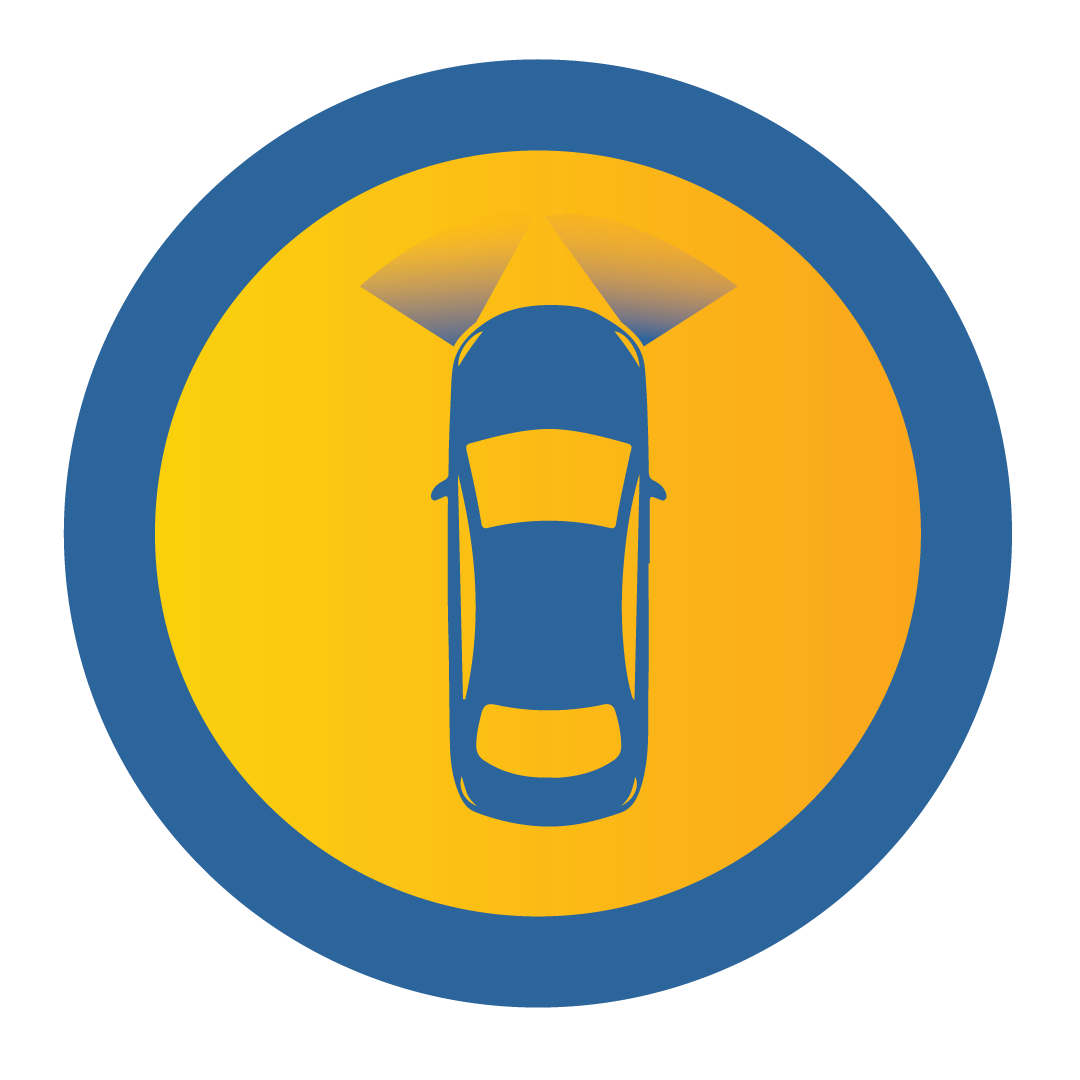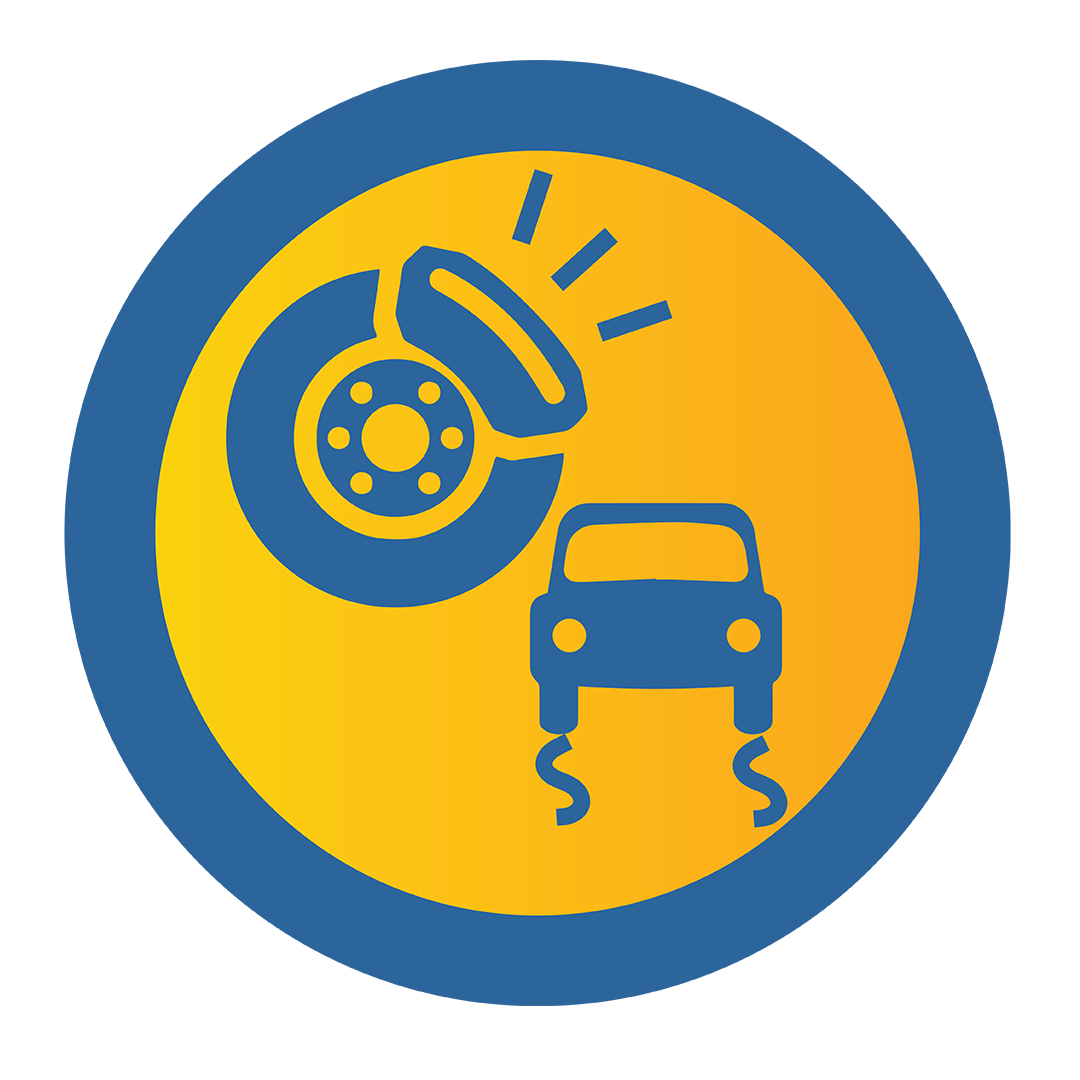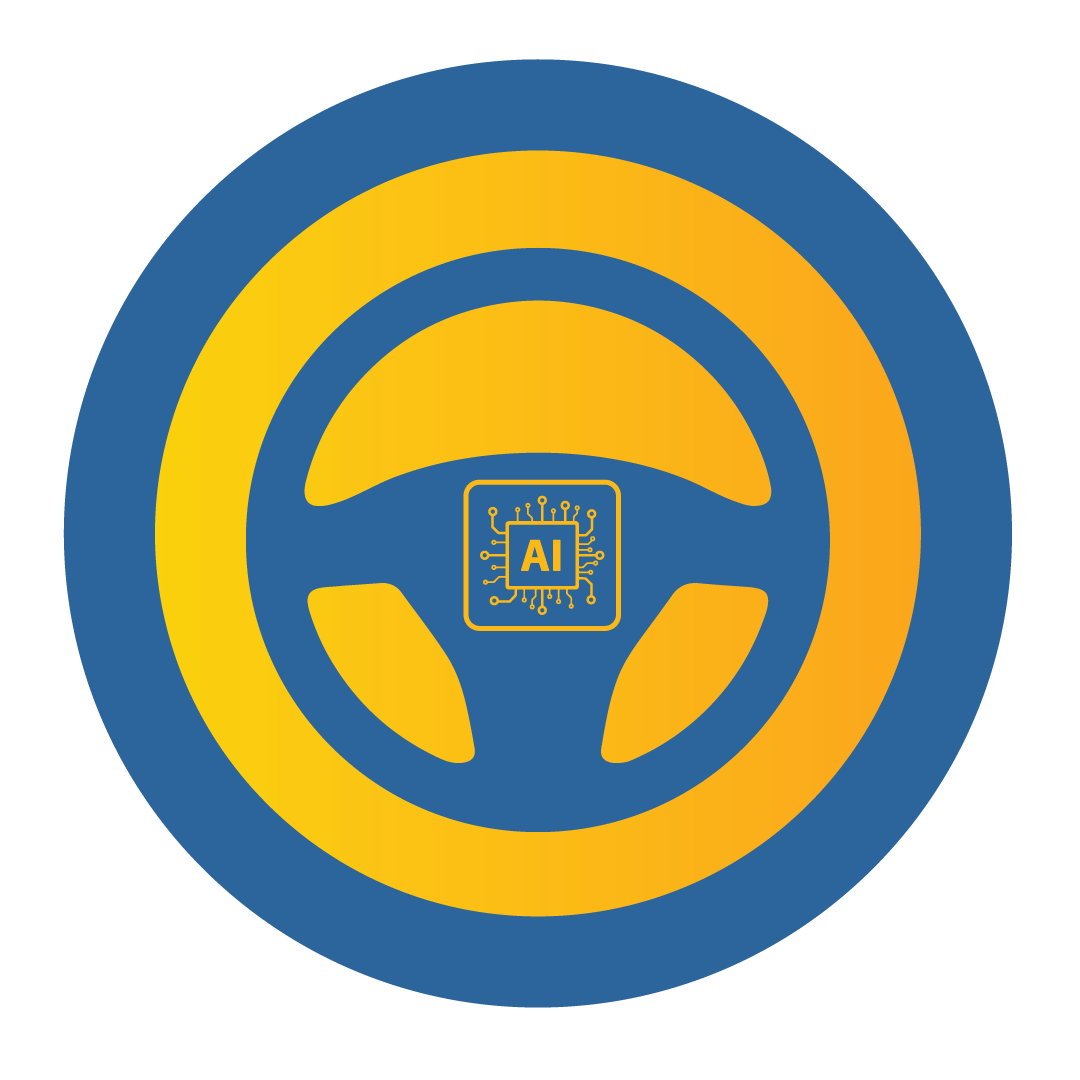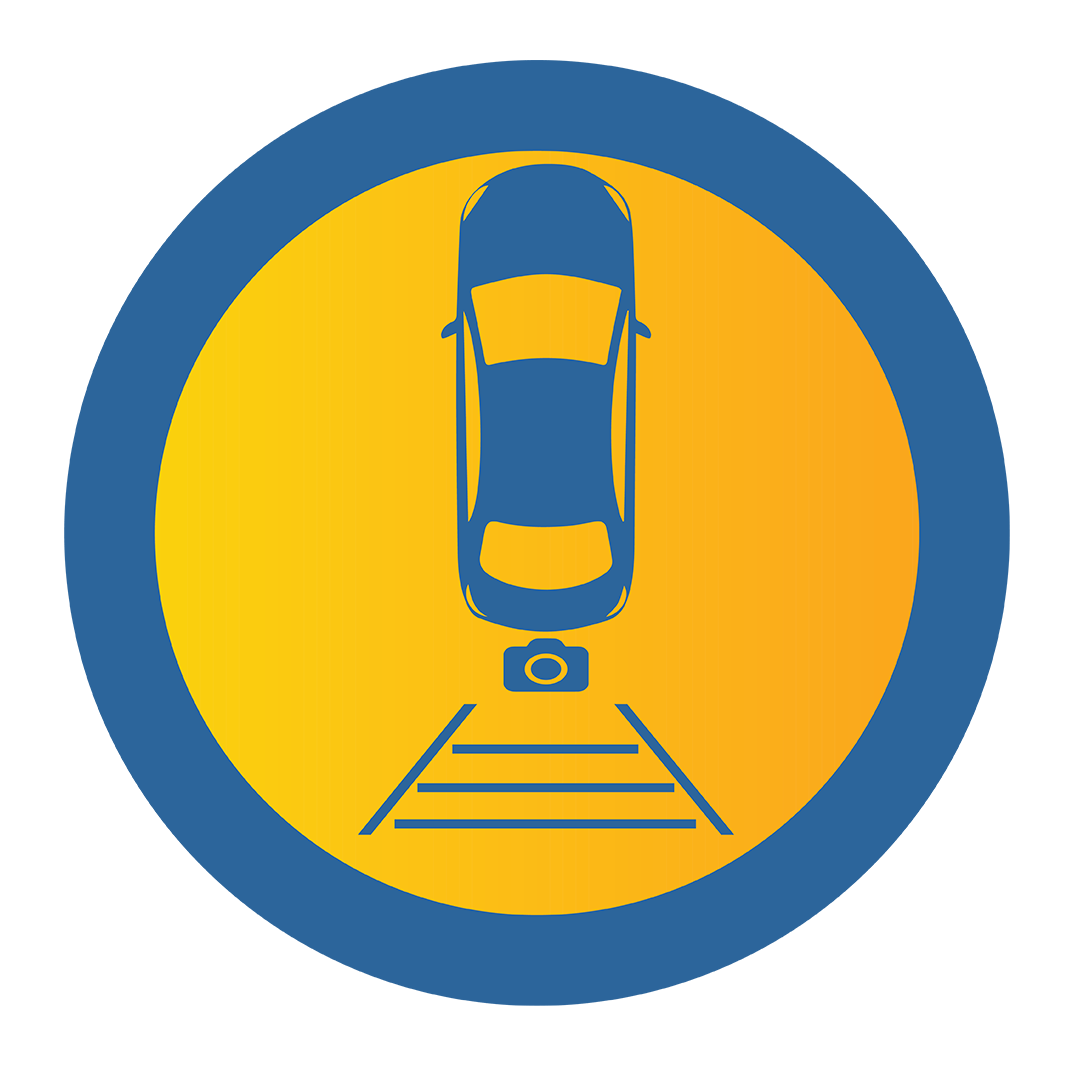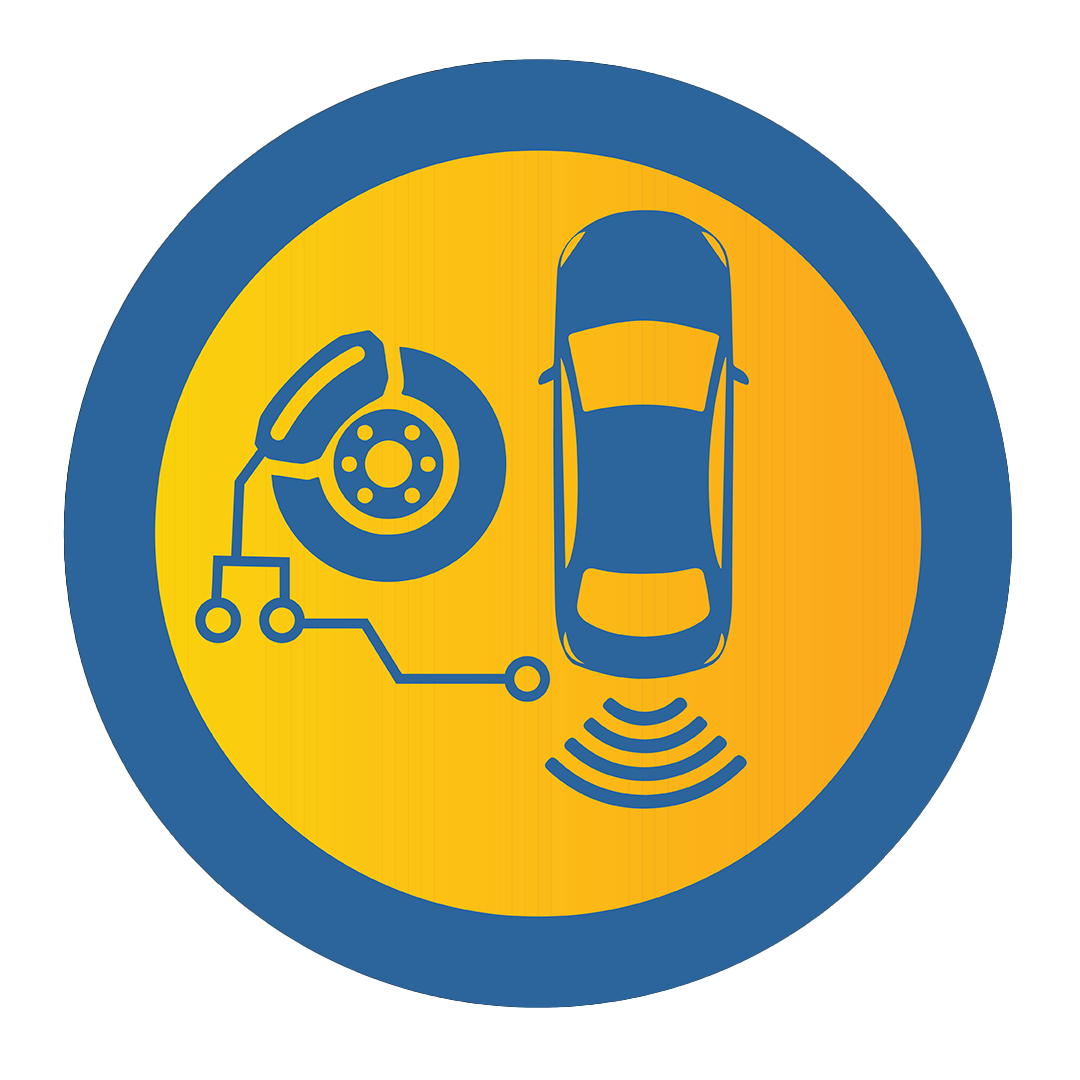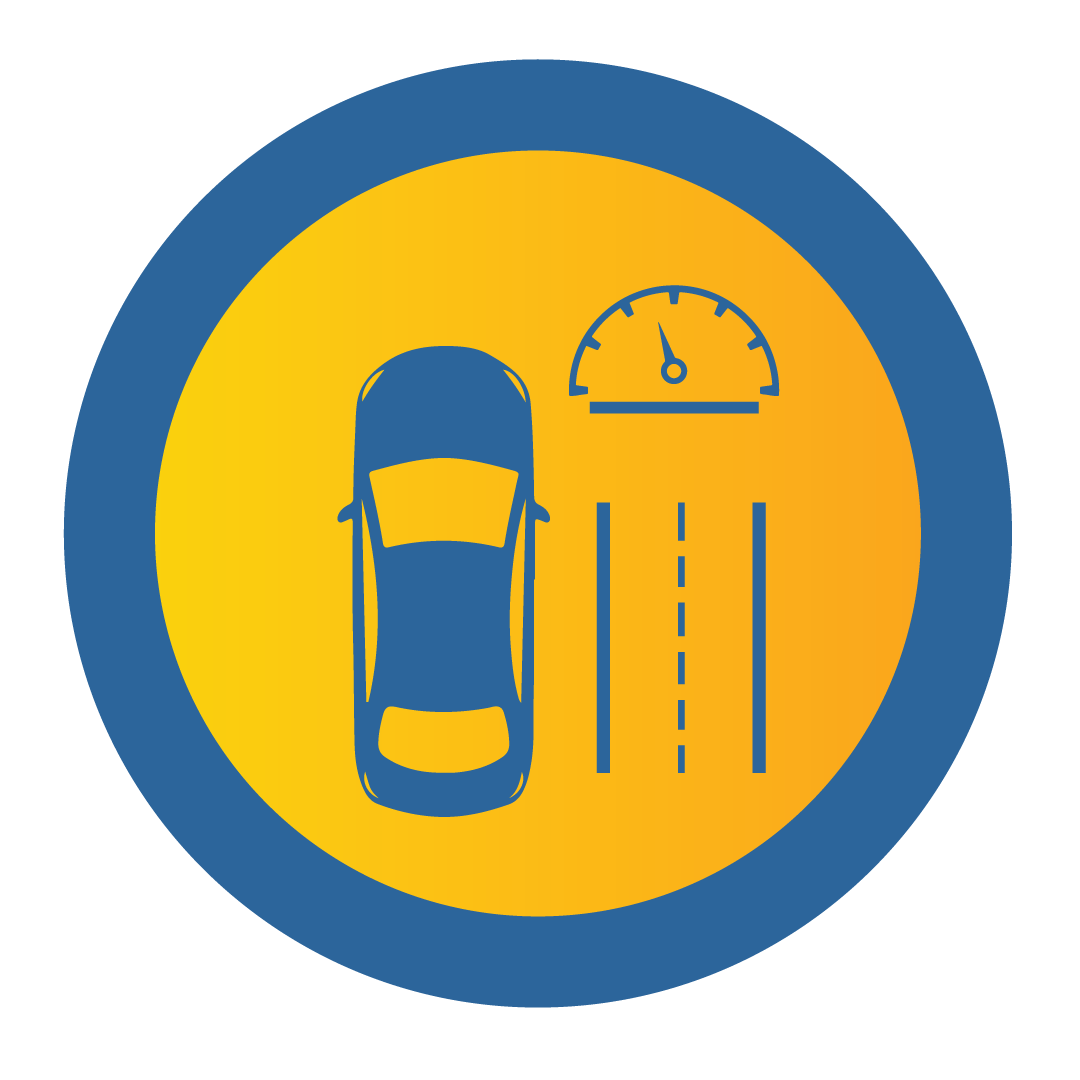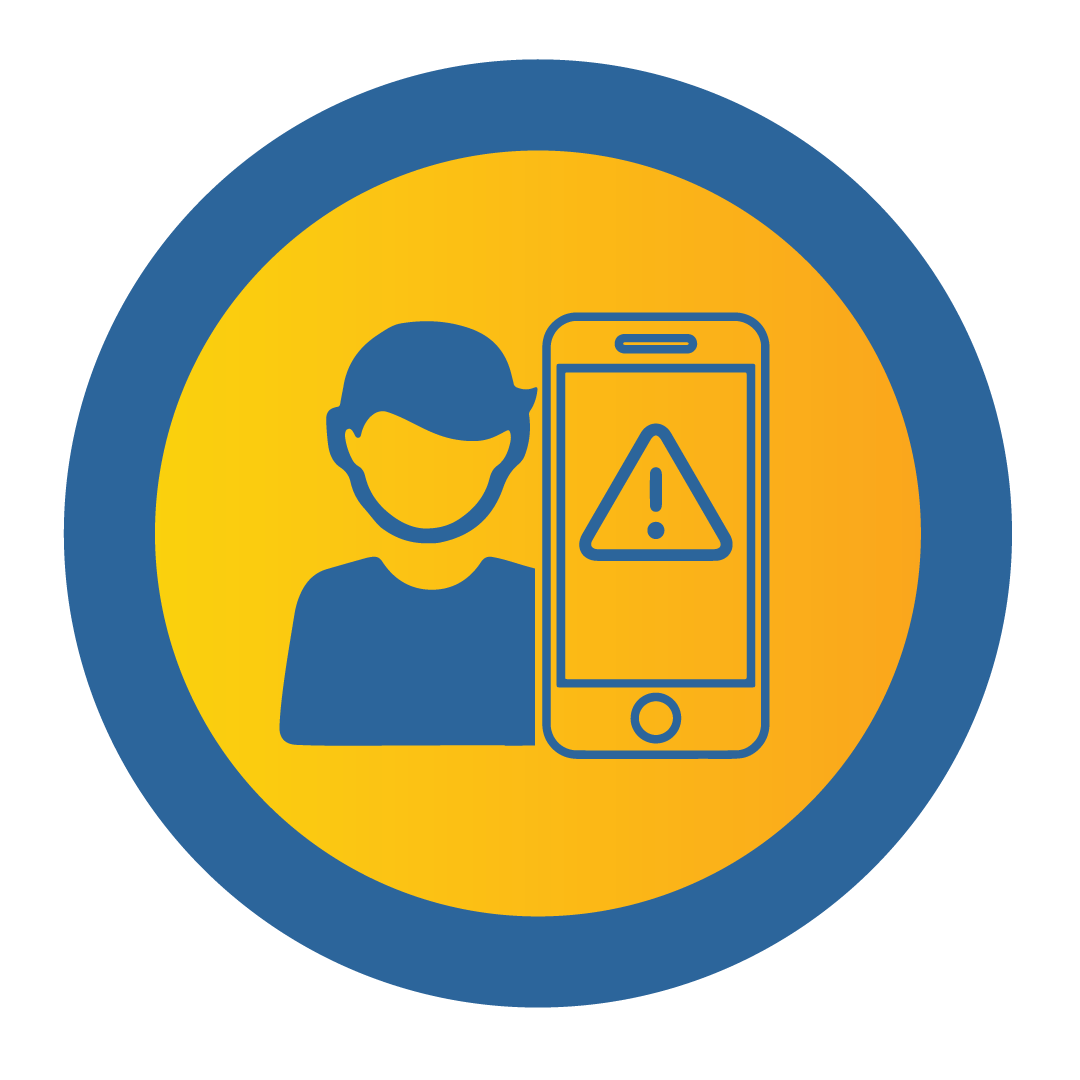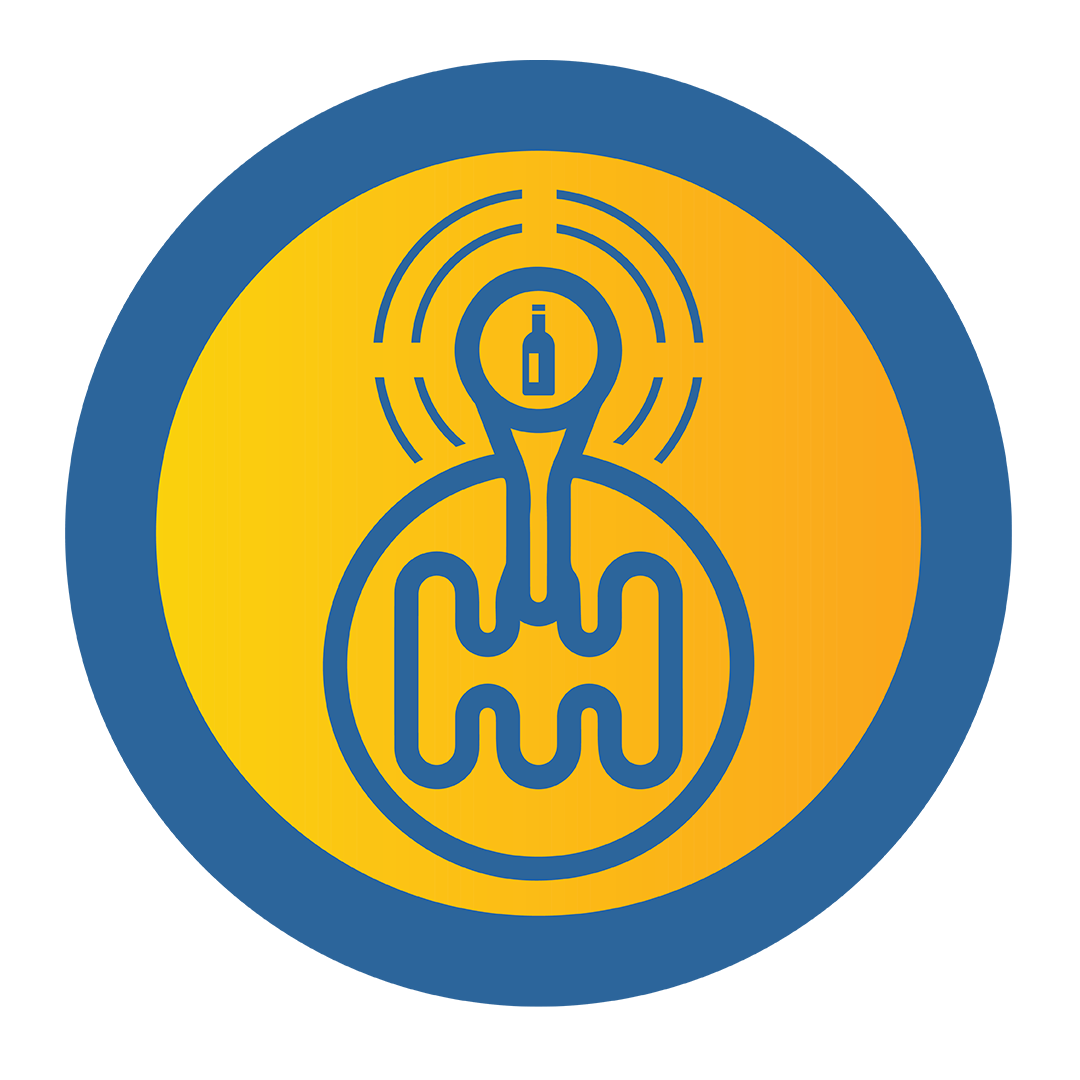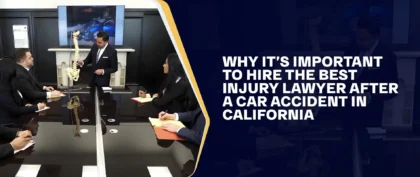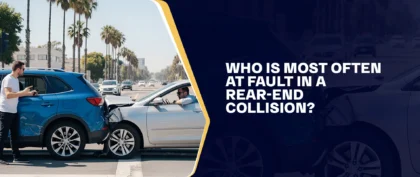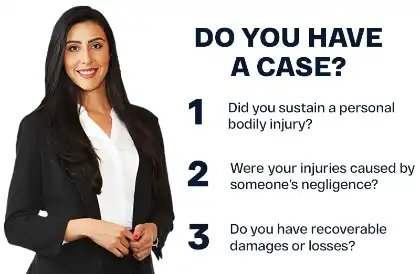Table of Contents
Cars have come a long way since their conception in the 19th century. More than just a means of traveling between points A and B, these vehicles have evolved to be safer, intelligent companions for their users. While they were regarded as “death machines,” modern cars boast sophisticated, safe driving technologies that protect drivers, passengers, and pedestrians. These cutting-edge systems act as a second pair of eyes (and hands) for drivers.
Modern technologies like Advanced Driver-Assistance Systems (ADAS) and Automated Driving Systems (ADS) offer a range of features designed to add layers of safety and improve the overall driving experience. Some provide alerts and warnings to notify drivers of potential road hazards. Other safety features take a more active role in improving safety by directly intervening in driving maneuvers to prevent car accidents or reduce the risk of severe injuries if one does occur.
The Key To Preventing Car Accidents With Technology Is Reducing Human Error
Many of the motor vehicle accident cases handled by our personal injury lawyers involve human error. Studies show that it remains the leading cause of traffic accidents. Knowing this, many auto manufacturers work to equip their vehicles with various features that will assist drivers in reducing the potential for making mistakes that will ultimately lead to a serious or even fatal car accident.
The auto industry’s new technologies have helped reduce the number of car accidents worldwide. With the innovation and future technology available to drivers, the common causes of car collisions and traffic-related accidents may continue to decrease significantly.
Latest Technologies That Help Prevent Car Accidents And Injuries
Even in 2026, many proven safe-driving technologies continue to help drivers avoid accidents on the road. Here are some of the most widely used systems:
Automatic Emergency Braking Systems (AEB)
Automatic emergency braking systems are classified into two types: crash imminent braking and dynamic brake support. These controls operate the forward and reverse brakes, respectively. Both of these features can be especially helpful in preventing rear-end accidents and head-on collisions.
According to a 2019 report, rear-end collisions typically account for around one-third of all car accidents reported annually. In 2022, the National Safety Council (NSC) reported that 3,300 deaths, or 17% of all fatalities in motor vehicle crashes, stem from rear-end crashes. Meanwhile, head-on collisions accounted for 29.9% or 5,800 deaths.
AEBs are also designed to help prevent the following accidents:
- Merging collisions due to failure to yield the right-of-way
- Intersection accidents
- Pedestrian accidents
- Obstacle collisions
- Left-turn accidents
- Parking lot accidents
AEBs play a huge role in preventing these accidents. These systems use radar sensors to detect potential hazards in front of the car. When a collision with another vehicle is likely, imminent braking alerts the driver, and it can even apply the brakes automatically to prevent an accident or minimize the impact. On the other hand, dynamic brake support will kick in when the driver doesn’t brake hard enough. It provides additional braking force to avoid a crash.
Rear-end collision lawyers may consider whether an AEB system was functioning properly when reviewing a crash, as this technology can play a role in understanding fault and evaluating potential claims.
Backup Cameras
Backup cameras, also known as rearview video systems, are designed to prevent crashes that may occur when a driver is backing up. This type of accident often involves a bicyclist or pedestrian getting struck by a vehicle pulling out of a driveway or parking lot.
These cameras automatically turn on when the vehicle is in reverse, giving the driver a direct view of what’s happening behind the car. Because rearview video systems effectively reduce the risk of backup accidents, they have become mandatory on all vehicles manufactured after May 2018.
Parking lot accident lawyers may review cases where a collision occurred despite these safety features to help determine whether the driver exercised proper caution or if other factors contributed to the accident. For example, a poorly marked parking area or obstructed view may still lead to a preventable crash.
Blind Spot Detection
Massive vehicles like trucks have huge blind spots that truckers and other road users have to be wary of. Unfortunately, blind spot accidents frequently happen on U.S. roads. Using blind spot detection helps drivers check if there are no vehicles in their blind spots (i.e., the places that drivers cannot easily see) when they change lanes. Some versions of this technology allow the driver to receive constant updates on the status of their blind spots, while other systems only provide warnings when the turn signal is activated. Studies suggest that blind spot detection technology can help prevent some collision scenarios involving lane changes.
Lane Departure Warnings
This technology uses cameras to monitor the car’s position within the lane markings. If you begin to drift without using your turn signal, the system will sound an alarm to bring your attention back to the road and prevent a potential sideswipe accident. This technology is particularly helpful for drivers who might have momentary lapses in concentration. Some versions of this technology can also take control of the vehicle to help guide it back toward the center of the lane.
Forward Collision Systems (FCS)
Many people end up in rear-end accidents simply because they aren’t focusing on the road. They might be looking at the other side of the road or looking down at their phones while driving. Forward collision systems are particularly helpful in these situations.
FCS uses sensors to monitor the distance between the car and the vehicle in front. If the system detects a closing distance that suggests an imminent collision, it will typically warn the driver with an audible or visual alert. In some advanced systems, FCW can even initiate automatic braking to further mitigate the impact of a crash.
Adaptive Headlights
Adaptive headlights are another innovative technology that has proven to reduce road accidents. These devices activate when the steering wheel is turned.
So, how are these helping drivers avoid accidents? Imagine driving down a dark road, and a deer jumps out onto the road, or another vehicle enters your path. Using adaptive headlights will allow you to see anything on the road. Some models even have auto-dimming features to prevent blinding oncoming motorists.
Electronic Stability Control (ECS)
Electronic Stability Control is a significant breakthrough that helps vehicles maintain stability, even in hazardous weather conditions. This system utilizes sensors to measure wheel speed, steering angles, and lateral motions. If it detects that the car is losing traction and is about to skid, it applies the brakes to the wheels to reduce engine power.
Studies show that ESC has reduced accidents by 40-50%, including rollovers and car crashes.
Vehicle-To-Vehicle Communication (V2V)
Self-driving vehicles have been a major focus in the automobile sector. This type of technology would require vehicles to have specific safety features to prevent collisions. Examples include V2V or vehicle-to-vehicle communication. This technology enables vehicles to communicate directly with each other, sharing real-time traffic data and hazard warnings to avoid collisions.
V2V communication relies on GPS for location tracking and other sensors to detect surrounding vehicles and objects. The GPS, along with the Dedicated Short Range Communications (DSRC) tech, connects cars with other vehicles and detects when road users, such as cyclists and pedestrians, are nearby.
V2V is a game-changer. It has the potential to dramatically reduce accidents, especially in congested urban areas where road hazards can be unpredictable.
Traction Control Systems( TCS)
Traction control systems can help eliminate accidents on slippery roads. They prevent the vehicle’s wheel from spinning out of control when it starts or accelerates, particularly on wet ground.
Although similar in objectives, TCS differs from anti-lock braking systems. The latter prevents the brake pads from locking by slowly lowering the pressure applied to the brakes. On the other hand, TCS simultaneously reduces the engine power delivered to the wheels, reducing their traction to maintain control and stability.
Auto-Steering
Some cars nowadays are equipped with auto-steering capabilities. However, this does not mean that your car can drive itself completely. The technology can control the steering wheel in specific situations to prevent a collision. This crash avoidance technology gathers information from your surroundings and adjusts your vehicle’s performance accordingly.
Currently, many auto-steering systems work together with automatic braking systems. That’s why vehicles equipped with auto-steering devices can apply brakes while avoiding or navigating around potential obstructions in the path, such as other motorists or pedestrians.
Rear Cross-Traffic Alert
A rear cross-traffic alert is similar to a backup camera. However, it only alerts you to approaching objects rather than stationary ones, particularly when backing out of a parking space. It can also alert you to animals, people, or any other moving obstructions in your path.
When it senses danger, the system typically sounds a warning beep and flashes an indicator light in your side mirrors, allowing you to react quickly to avoid a collision.
Rear AEB
A car with a rear cross-traffic alert also installed often has a rear AEB system. If an object is detected, the system automatically applies the brakes to prevent the driver from backing into it.
LED Headlights
Having quality headlights is an important way to prevent a car accident at night. Unlike traditional halogen bulbs, light-emitting diode (LED) headlights last much longer, with some lasting over 20 years. An LED light does more than light up the street in front of you so you to see. They directly convert 80% of their energy to light. LED headlights only waste twenty percent of their energy. Compared to halogen bulbs, which only convert around 20% and waste 80%, LED headlights put less strain on your car’s battery.
LED headlights also generally produce better-quality light. They illuminate the road without blinding other drivers. An LED headlight also draws less energy from the car and makes a much brighter light, which improves fuel efficiency.
Autonomous Cruise Control (ACC)
For a long time, vehicles have been equipped with cruise control, which makes long-distance drives a lot more bearable. Autonomous cruise control is a more advanced version of cruise control technology. It automatically adjusts the speed of your car to help maintain a safe distance from other vehicles in front. That way, you can enjoy the benefits of cruise control without constantly slamming on the brakes and resetting it due to slow traffic or sudden stops.
There is an even more advanced option for cruise control, known as cooperative adaptive cruise control. This system gathers information from roadside beacons, mobile infrastructure, and satellites to determine the distance between other vehicles and adjust accordingly.
Voice Control/Bluetooth
In California and many other states, using a phone while driving is illegal. Distracted driving is one of many causes of motor vehicle accidents. Modern smartphones can automatically be connected to Bluetooth-enabled cars, allowing you to answer calls with a voice command.
Voice control also allows you to interact with your car’s features. Using voice commands, you can get directions, change songs, adjust the temperature, and perform other functions without taking your hands off the wheel and your eyes off the road.
This is not a brand-new technology, but it is helpful in preventing distracted driving accidents. Due to an increase in car accidents caused by phone distractions, many applications and devices designed to promote safe driving will continue to receive funding.
Anti-Reckless Teen Driving Tech
Even if you manage to prevent teenagers from using their phones while behind the wheel, they might still be tempted to engage in aggressive driving when prompted to do so by their peers. Some younger drivers speed to reach their destinations faster or engage in other risky behaviors for fun.
Reckless driving is one of the common factors that contribute to traffic accidents involving teen drivers. There are products or features designed to monitor and help promote safer driving habits among teens. For example, some phone applications that use GPS can alert parents if the teen is speeding or driving dangerously.
In crashes involving teen drivers, accident lawyers may examine whether these monitoring tools were in place and how they were used. This information can help clarify whether reckless behavior contributed to the accident and may be relevant in assessing responsibility or damages.
Interlock Devices
Every year, thousands of deaths occur due to driver drowsiness or intoxication. In 2022, the National Highway Traffic Safety Administration (NHTSA) logged 693 deaths due to drowsy driving. Meanwhile, authorities recorded about 13,524 alcohol-related traffic deaths.
Attention detection devices that monitor drivers for signs of drowsiness or impairment could potentially help prevent some fatalities. For example, an in-vehicle breathalyzer could turn off a vehicle if the driver’s blood alcohol content (BAC) exceeds 0.08.
Drowsiness Video Sensor
There is also a drowsiness video sensor on the dashboard that monitors the driver’s face for any signs of drowsiness. The system records your driving habits and behavior using sensors and cameras. It then analyzes the video footage of the driver’s face and behavior to determine whether they’re attentive enough to operate their car safely. It can also track the movements of your eyes and see how they coordinate with the steering wheel.
This technology also monitors the following:
- Eye Movement & Closure — The cameras monitor whether you close your eyes frequently, which can indicate fatigue.
- Steering Patterns — The sensors detect how you control your steering wheel, whether it starts to wander or your grip on it becomes loose.
- Lane Position — The system tracks if your car drifts from its lane without a clear cause.
The system immediately notifies you if it notices signs that you might be distracted or sleepy. This sensor will tug on the driver’s seat belt or make noises to get the driver to pull over. When you receive these signals, find a safe parking spot, then rest or take a nap to avoid drowsy driving.
This technology also offers in-the-moment assessments and interventions, helping reduce the risk of accidents. It provides extra security for anyone traveling long distances or at specific times when fatigue may set in, such as early in the morning or late at night.
The trucking industry has been the first to adopt this technology. Some logistics service providers use special Bluetooth headsets that track drivers’ head movements and eye activity to assess drowsiness.
Gear Shift Palm Detection
This technology integrates a sensor into the gear shift knob that detects alcohol traces on the driver’s palm. If alcohol is at a level above a certain threshold, the system automatically shifts the car into park. It also triggers the navigation system to issue a voice alert for drunk driving. Nissan and other car manufacturers are incorporating this technology into their vehicles.
Phone Suppression Technology
New apps, such as Zoom Safer, are improving road awareness and helping drivers ignore their phones. Zoom Safer is installed on the headset to screen text messages and calls. This technology will block text messages and inform those texting that you are currently driving. It will announce any callers over a speaker, so the driver does not have to look at the phone.
Night Vision
Night vision technology can enhance visibility at night by providing clearer views of the road ahead. It is particularly useful when traveling in areas with limited street lighting or where animals frequently walk or cross. Standard headlights only illuminate a portion of the pathway. With night vision technology, you can see the entire road, including its curves, bumps, and obstructions, more clearly.
This technology also uses special cameras with low-light performance, which can detect heat and emit a unique type of light to improve long-range vision. The system may also display images of people, animals, and other objects on the road that are typically difficult to notice with only your car’s headlights on your dashboard screen.
Tire & Wheel Innovations
Like other car parts, tires play a critical role in safe driving. Worn or defective tires can significantly compromise your handling and braking abilities. Here are some new technologies designed for tires to keep you safe on the road:
- Run-Flat Tires — These tires allow drivers to continue driving for a limited distance, even after a puncture. They give you time to reach a safe location for repairs.
- Tire Pressure Monitoring Systems (TPMS) — This technology monitors tire pressure for optimal performance. The system will warn you if your tire pressure falls below a safe level so you can address the issue before it becomes a safety hazard.
Driver Alcohol Detection System For Safety (DADSS)
Another innovation called the driver alcohol detection system for safety has resurfaced to reduce drunk driving-related accidents. It comes with two technologies:
- A touch system emits an infrared light that passes through the motorist’s fingertips or palms to measure blood alcohol content. It can capture several precise readings in a short time. Vehicle experts are still debating the most suitable placement of this technology. However, initial discussions suggest that it should be positioned near the car’s steering wheel, gear shift, and starter button.
- A breath system measures the vehicle occupants’ normal breath in a passive and noninvasive manner. Unlike breathalyzers, it doesn’t require a forced deep lung sample into a mouthpiece. The sensor uses infrared light to determine alcohol levels precisely.
Cars installed with DADSS may start but not move if the driver’s BAC is at or over the legal limit of 0.08%. While waiting for the alcohol level to drop, drivers may charge their phones, call for assistance, or adjust their vehicle temperature. Once the BAC falls below the limit, the system will reset and prepare to conduct another test.
Using Existing And Emerging Technology To Prevent Distracted Driving
Technology has become an unavoidable part of everyone’s life. Not many people can say they go a day without having anything to do with technology. We can keep in touch with family and friends and work anywhere, whether we’re at the beach, the mall, or even on the road.
However, fiddling with any device while driving, especially a cell phone, is dangerous. It can divert drivers’ attention, causing them to collide with obstacles or oncoming traffic. The National Highway Traffic Safety Administration (NHTSA) reported that in 2022, the country recorded a total of 3,308 fatalities and 289,310 injured victims due to distracted driving.
Distracted driving has become a prevalent concern throughout the United States. Based on a nationwide survey, 38% of drivers in the country admit to increasing impatience behind the wheel over the last 12 months. Results also reveal that about 54% have been guilty of speeding by more than ten miles per hour, while 56% have been eating while driving. Furthermore, almost one-fifth, or 22%, of the drivers were reported to be texting while driving, and 21% were making lewd gestures to other drivers.
Technology can be part of the solution, not just the problem. While some technologies contribute to distracted driving, others can actually promote safe practices. The following devices may be used to reduce distractions:
Mobile Phone Solutions
Smartphones with built-in driving modes offer a convenient and cost-free way to help drivers minimize distractions. When enabled, driving mode activates a “Do Not Disturb” function, silencing incoming calls, messages, and notifications that could divert your attention away from driving.
Other Car Safety Features Technology
To help reduce the accidents and fatalities caused by distracted driving, automakers and tech companies created standard safety measures that can be installed in cars. These include the following:
- Seatbelt Sensors — Seatbelts save lives, but the importance of using one while driving is often overlooked. Cars have seatbelt warning lights on their dashboards, but some vehicles have seatbelt alarms that emit loud successive beeps until the driver and passengers fasten their seatbelts.
- Lane-Keeping Assist — This device automatically applies light steering correction to help a car stay in its lane.
- Lockout Controls — While the car is in motion, lockout controls can partially turn off the on-screen keyboard and monitor functions.
- Driver-Monitoring Systems (DMSs) — These systems continuously evaluate drivers’ attentiveness and concentration. Using both hardware and software components, DMSs monitor driver behaviors and physiological states in real-time and issue warnings as needed.
- Infotainment Systems — They rely less on visual or physical controls so that they won’t compromise a driver’s attention. For example, Android Auto and Apple CarPlay enable phones to connect to the vehicle’s built-in microphones and speakers. The driver can then use voice control to play music and access other apps.
Telematics Technologies
With auto insurance rates increasing, agents have a great opportunity to use telematics to help both personal and commercial clients save money. This technology has advanced significantly and has become accessible through mobile applications, internet-connected phones, and plug-in vehicle gadgets.
Telematics primarily collects data on driving behavior and vehicle data, such as:
- Speed
- Acceleration
- Idle time
- Hard brake application
- Vehicle position
- Current mileage
The system can detect car accidents and automatically call emergency services. It can also analyze the circumstances of the event, potentially aiding in accident reconstruction for insurance purposes. Additionally, safer drivers with lower risk profiles based on telematics data may qualify for lower premiums.
How Cybersecurity Devices Protect Cars From Hackers
Like computers and cell phones, modern vehicles typically contain computer systems that perform many functions. These systems often connect to the internet, making them susceptible to cyberattacks.
Hackers may attempt to access an automobile without authorization to take over the vehicle. They may also deactivate safety features or steal personal information. Drivers may need to install cybersecurity features, such as data-blocking devices, intrusion detection systems, or anti-hacking software, to help protect privacy and safety.
These features prevent hackers from gaining control of a car’s systems, potentially manipulating steering or braking functions. They also avoid vulnerabilities in software within a car’s system that can lead to glitches and malfunctions, impacting features crucial for a smooth driving experience.
How Drivers Must Treat Car Safety Features
Modern cars are packed with technology designed to keep you safe. These features can be incredibly helpful, but only if you understand how they work and how to use them properly.
For example, if you have an ADAS camera or sensor, it is important to be aware that these technologies are often installed on windshields or vehicle sides, which are more susceptible to damage. If they become defective, only skilled auto mechanics may be able to replace or recalibrate them using specialized equipment. Errors in this process can render the technology ineffective, resulting in the inaccurate identification of potential hazards.
Furthermore, use the ADAS as intended. A 2020 survey of 500 US drivers with 2016-made vehicles revealed that many intentionally disabled certain safety features that could help them avoid collisions. For instance, 30% of them would turn off their adaptive cruise controls because they prefer full control of their vehicles instead of relying on a device.
Meanwhile, 23% wouldn’t keep using lane-keeping assistants and driver attention monitors after these systems sent false alarms. Lane-keeping assistants could inform drivers with a sound, flashing light, and vibration if their cars drift out of their lanes. If the driver doesn’t react, the system takes over the steering to return the vehicle to the center of the lane. However, many drivers find this feature disturbing, so they disengage the function.
Some people also turn off adaptive cruise control because they find the system bothersome or prefer to manually operate the vehicle. Other safety features that were also switched off included AEBs, traffic sign recognition, forward collision warning, pedestrian detection systems, blind-spot monitoring, backup cameras, and traffic alerts.
While some drivers may find certain safety features annoying or intrusive at first, disabling them can significantly increase their risk of being involved in an accident. At the same time, remember that these safety features are there to assist you, not take over completely. It’s crucial to be alert and focused behind the wheel.
Frequently Asked Questions About Safe Driving Technologies
What Is The Difference Between ADS And ADAS?
Advanced Driver-Assistance Systems, or ADAS, are technological features that improve driver safety. Unlike ADS, these features still require human intervention. Sensors and cameras can detect nearby obstacles or driver errors, alerting the driver. If a sensor in an ADAS-equipped vehicle malfunctions, its specific function stops working.
On the other hand, Automated Driving Systems, or ADS, are the highest level of driving automation. Vehicles equipped with ADS can perform all aspects of dynamic driving within their operational design domain (ODD), which is specific to the model, even in the absence of human intervention or supervision.
Should You Buy A Car With Advanced Safety Systems?
Advanced safety systems are crucial for some drivers, particularly those driving for Uber and Lyft. They’re encouraged to use ADAS to minimize the risk of harm while providing ridesharing services. This approach is similar to purchasing insurance for an inevitable event, aiming to reduce potential liability and damages as much as possible.
However, ADAS also contributes to higher vehicle costs, including maintenance and repair expenses. Because these systems rely on complex sensors, repairs after an accident can be significantly more expensive than with a regular car. The cost difference can be as much as double the typical service bill. Despite its drawbacks, ADAS is a worthwhile investment, especially since it can significantly enhance a car’s safety.
Are These Systems Actually Making Cars Safer?
Many drivers and car enthusiasts wonder, “Are vehicles with sophisticated safety systems truly safer?” Studies have shown that they are.
According to the Insurance Institute for Highway Safety (IIHS), the crash involvement rate for cars equipped with blind-spot monitoring was 14% lower than that for identical models without the technology. A separate study also reported that about 50,000 crashes and 16,000 injuries may have been prevented if this monitoring device had been sold in the country since 2015.
Meanwhile, the Partnership for Analytics Research in Traffic Safety (PARTS) also published a 2022 study revealing the benefits of FCS and AEBs. These technologies are effective in reducing certain types of crashes.
The same analysis also indicated that AEBs are applicable in various weather conditions, lighting, and road conditions. Furthermore, lane-keeping, centering assistance, and other similar intervention technologies are beneficial in reducing single-vehicle crashes that result in severe injuries.
Although these safety features have garnered excellent impressions from users, they have also received criticism. Some drivers report that their car systems misinterpret nearby vehicles, especially on highway on-ramps, as potential crash threats.
Does New Technology In Vehicles Cause Accidents?
New vehicle technologies are designed to improve safety. However, they are not completely foolproof. While these features can significantly reduce accidents, things can still go wrong, especially when misused.
According to a 2019 study, drivers often struggle to understand how these systems work and how to use them properly. Researchers acknowledged that learning new technology takes time, but also identified a troubling trend. Many drivers don’t make the effort to grasp the limitations of these automated safety systems. The expectation seems to be that these features operate autonomously without driver responsibility.
Another recent study revealed that many vehicles with ADAS still experienced accidents. In California, 200 such accidents happened, mostly at intersections on dry surfaces, involving vehicles traveling at 25 mph.
Traffic accident lawyers may review cases involving new vehicle technology to help understand how system limitations or misuse could have contributed to a crash. Regardless of these systems, this data underscores the importance of safe driving practices. Remember, ADAS is there to assist, not replace, you behind the wheel.
In What Way Does Automotive Technology Contribute To Wrecks?
Different technologies are emerging to help drivers prevent collisions. However, this does not mean traffic accidents will drop to zero.
Here are some ways safety technologies can contribute to car accidents:
Over-Reliance On Technology
Drivers are increasingly expected to use modern in-car technology, which they may not fully understand. For example, GPS systems can be a source of distraction, and some crashes are attributed to drivers focusing on them instead of the road. Others occurred when drivers mindlessly followed directions, which led them astray.
Furthermore, depending too heavily on ADAS may lead to driver inattention. While some ADAS features can enhance focus, over-reliance can be dangerous. Drivers may become complacent, trusting technology to handle situations for them without maintaining their vigilance.
In fact, in the first quarter of 2024, TESLA recorded one crash for every 7.63 million miles driven by its vehicles with Autopilot technology.
Overwhelmed By Information
Multiple safety technologies can overwhelm drivers, which can lead to confusion. For example, you might become overstimulated and lose focus if you constantly try to monitor and interpret information from multiple displays. Sensors and warnings may also cause you to become distracted while driving.
Distractions From Infotainment Systems
Infotainment systems in cars make traveling easier. They’re designed in a really simple way to avoid distractions. Nonetheless, they can still distract drivers. Adjusting the radio or changing a podcast while driving on a busy street can cause you to take your eyes off the road. Consequently, you might fail to notice obstructions or incoming traffic, leading to accidents. An excessive focus on the car’s technology, whether using a touchscreen or voice commands, can also lead to collisions.
Vehicle Safety Systems Struggle To “See” In Bad Weather
California’s reputation for sunshine can lull drivers into a false sense of security. While rain, fog, and thunderstorms are less frequent, they can still pose a significant threat when they do occur. These unpredictable weather events can quickly change road conditions. For example, rain makes the pavement slippery, reducing traction and increasing stopping distances.
You might be tempted to rely on your car’s safety features in these challenging conditions. Unfortunately, they may not function optimally during the storm.
AAA’s research indicates that AEBs may decrease performance in wet weather conditions. Researchers found that at a speed of only 35 mph, this technology failed one out of three times when tested using various simulated weather conditions. This study raises concerns about driver liability if the technology does not activate emergency braking to reduce the impact.
Additionally, the same study revealed that lane assistance may also fail during a heavy downpour. AAA’s analysis showed these devices failed 69% of the time when tested in the rain.
Despite the high expectations for car safety technologies, manufacturers have yet to address several significant limitations, particularly concerning adverse weather conditions. The failure to conduct thorough testing of these systems in bad weather, coupled with the absence of alternative programming or settings for rain, could result in catastrophic accidents. In such cases, victims may have a claim against the vehicle’s manufacturer.
Given these limitations, it’s still essential for drivers to remain focused on the road. Remember, drivers must remain vigilant and not rely too heavily on these automatic systems.
Who Is Liable For System Failures Or Errors On My Vehicle?
Car manufacturers and developers of ADAS and ADS technology strictly adhere to the laws and regulations governing their business. However, they could also be held responsible if their safety driving systems fail and cause an accident. Should you decide to file a lawsuit against them, a car accident lawyer can guide you through the process and help protect your rights.
Your car accident attorney can collect evidence to establish the cause of the accident and assess who may be held liable. For example, your car’s electronic control module may reveal system errors and show that you weren’t at fault. This information can help support an argument that other parties could be held accountable.
Should I Hire A Lawyer For My Car Accident?
The law does not require you to hire an attorney after a car accident. However, if you are seeking compensation, working with a car accident lawyer can be beneficial. Many victims of car accidents choose to seek legal counsel and representation so that they can focus on their health and recovery while also pursuing legal action. The benefits don’t just stop there. When you hire an attorney for your car accident case, they will:
- Gather evidence to support your case.
- Help you file a claim or initiate a lawsuit.
- Negotiate for a fair settlement.
- Communicate with all involved parties, including insurance companies.
How Can I Find A Good Car Accident Lawyer?
Finding an experienced car accident lawyer may seem overwhelming, but there are several strategies you can use to simplify your search. Start by seeking recommendations from friends, family, or colleagues who were in a car accident and got a car accident lawyer to help them with their claim. They can provide valuable insights and recommendations based on their personal experiences.
Additionally, online directories and legal associations, such as the American Association for Justice, maintain lists of car accident lawyers. Once you have a shortlist of potential lawyers, schedule a consultation to discuss your case and assess their suitability.
What Should I Ask A Car Accident Attorney?
During a consultation with a car accident lawyer, it’s vital to ask relevant questions to evaluate their qualifications and determine if they are the right fit for your case. Here are some questions to consider:
- How many car accident cases have you handled?
- Do you have experience with cases similar to mine?
- How do you approach negotiations with insurance companies?
- Will I need to file a lawsuit?
- Can you access resources and expert witnesses to support my case?
- How do you communicate with clients and keep them informed?
- Can you provide references or testimonials from past clients?
Tech Can’t Stop Every Accident, But We’re Here To Help If You’re Injured In One
Vehicle-related innovations have one primary purpose: to improve safety. However, not all modern safety technologies can eliminate the risk of car accidents. While it’s important to stay safe on the road, drivers should also know where to turn if a collision ever happens to them.
If you get injured in a car accident caused by a faulty product or a negligent driver, consider consulting with a California car accident lawyer. They can help you understand your rights and legal options for seeking compensation for damages.
Arash Law has handled cases involving defective safe-driving technologies, negligent manufacturers, and reckless drivers. Our car accident lawyers work to advocate for rights during settlement negotiations or court proceedings.
Contact us at (888) 488-1391. We work on a contingency fee basis, so you don’t pay any attorney’s fees unless our car accident lawyers obtain compensation for you. While our legal fees depend on the outcome of your case, you may still be responsible for a few case-related expenses, such as court costs.
Our law firm is available to represent victims from different cities in California, including Los Angeles, San Diego, San Jose, San Francisco, Fresno, Sacramento, Long Beach, Oakland, Bakersfield, and Anaheim. Our car accident lawyers also assist clients from other locations, including Coronado, National City, Chula Vista, Lemon Grove, Bonita, La Mesa, Imperial Beach, La Presa, Spring Valley, El Cajon, and Lakeside.

